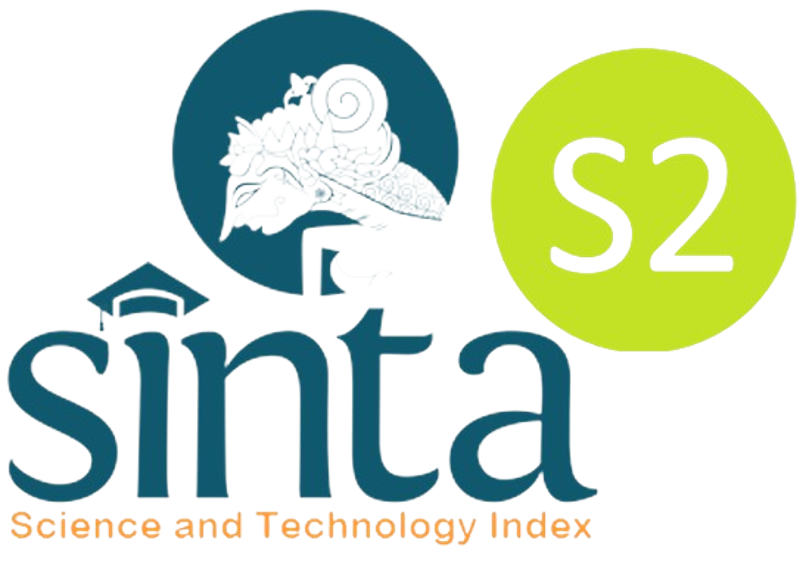Classroom Language: Preparing the Pre-Service Teachers for Successful Classroom Interactions
Abstract
Abstract: Classroom Language: Preparing the Pre-Service Teachers for Successful Classroom Interactions. Objective: This study aims to investigate how pre-service teachers (PSTs) employ classroom language for Opening, Running, and Closing the Lesson in the classroom. Methods: A qualitative method was applied where the data were gathered through questionnaire sheets and an observation checklist. Thirty students in the second year of the English Education Study Program in Surabaya, Indonesia, participated in this study. Findings: The findings reveal that PSTs have applied classroom languages appropriately and successfully for eight components of basic teaching skills. Nevertheless, three components that do not vary are the language expressions attributed to opening the lesson for checking attendance, varying stimuli for setting and cleaning up teaching media, and organizing the small group discussion. Conclusion: The findings can be valuable input for the teacher of an education program to be more concerned with the teacher candidates language variations to prepare them for successful classroom interactions.
Keywords: classroom language, pre-service teachers, classroom interactions
Abstrak: Bahasa Kelas: Mempersiapkan Calon Guru untuk Keberhasilan Interaksi Kelas. Tujuan: Penelitian ini bertujuan untuk menginvestigasi bagaimana mahasiswa calon guru menerapkan bahasa kelas (classroom language) untuk membuka, melaksanakan, dan menutup pembelajaran dalam kelas. Metode: Metode kualitatif diterapkan dimana data dikumpulkan melalui lembar kuesioner dan observasi kelas. Tiga puluh siswa di tahun kedua dari program studi pendidikan bahasa Inggris di Surabaya, Indonesia, berpartisipasi dalam penelitian ini. Temuan: Hasil penelitian menunjukkan bahwa partisipan telah menerapkan bahasa kelas dengan tepat dan sukses untuk enam komponen dari ketrampilan dasar mengajar. Namun, tiga komponen yang terkait ungkapan bahasa yang tidak partisipan variasikan meliputi membuka pelajaran untuk memeriksa kehadiran, mengatur dan membersihkan media pengajaran, dan mengorganisasikan diskusi kelompok kecil. Kesimpulan: Temuan ini dapat menjadi masukan yang berharga bagi program pendidikan guru untuk lebih memperhatikan variasi bahasa yang calon guru gunakan dalam menyiapkan mereka untuk kesuksesan berinteraksi dengan peserta didik di kelas.
Kata kunci: bahasa kelas, calon guru, interaksi kelas.
Full Text:
PDFReferences
Allday, R. A., & Pakurar, K. (2007). Effects of teacher greetings on student on-task behavior. Journal of Applied Behavior Analysis, 40(2), 317–320. https://doi.org/10.1901/jaba.2007.86-06
Bella, M. S., & Zainil, Y. (2020). An analysis o f teachers’ classroom language at SMPN 4 Muara Bungo. Journal of English Language Teaching, 9(4), 644–651. https://doi.org/10.24036/jelt.v9i4.110200
Bilash, O. (2011). Best of Bilash: Improving second language education. https://sites.educ.ualberta.ca/staff/olenka.bilash/Best%2520of%25%0A20Bilash/competencyperformance.html
Ellis, R. (2008). Classroom interaction and second language acquisition. In the study of second language acquisition (p. Oxford: Oxford University Press). Oxford: Oxford University Press.
Emmer, E., Evertson, C., & Worsham, M. (2006). Classroom management for middle and high school teachers (7th ed.). . Boston: Pearson.
Greig, A. (2000). Student-led classes and group work: A methodology for developing generic skills. Legal Education Review, 114418(02).
Habibi, N. (2017). The Use of flashcards in improving vocabulary mastery of students with disability. Inklusi, 4(2), 197. https://doi.org/10.14421/ijds.040203
Hadiatmi, I. N., Wilian, S., & Yusra, K. (2020). Classroom languages as used by English teachers. Jurnal Ilmiah Pendidikan Indonesia, 2(1), 81–90. https://jipi.unram.ac.id/index.php/jipi/article/view/40/38
Hapsari Oka, I. A. P. P., & Artini, L. P. (2022). The purpose of the use classroom language. Jurnal Pendidikan Bahasa Inggris Undiksha, 9(3), 241. https://doi.org/10.23887/jpbi.v9i3.43105
Krashen, S. D. (1982). Second language acquisition theory. Principles and practice in second language acquisition, 9–32. In Pergamon Press Inc (Vol. 33, Issue 1). https://doi.org/10.3102/00346543033001038
Leona, N. L., van Koert, M. J. H., van der Molen, M. W., Rispens, J. E., Tijms, J., & Snellings, P. (2021). Explaining individual differences in young English language learners’ vocabulary knowledge: The role of Extramural English Exposure and motivation. System, 96, 102402. https://doi.org/10.1016/j.system.2020.102402
Richards, J. C., & Lockhart, C. (2007). Reflective teaching in second language classrooms. In Cambridge University Press (Vol. 79). Cambridge University Press. https://doi.org/10.2307/329404
Sujarwo. (2020). Students’ perceptions of using machine translation tools in the EFL classroom. Al-Lisan Jurnal Bahasa, 5(2), 230–241.
Van Canh, L., & Renandya, W. A. (2017). Teachers’ English proficiency and classroom language Use: A conversation analysis study. RELC Journal, 48(1), 67–81. https://doi.org/10.1177/0033688217690935
Whitehead, S. J. (2021). “I thought we weren’t in Spain!”: Discursive negotiations of realness in a foreign language classroom. System, 100(August 2020), 102532. https://doi.org/10.1016/j.system.2021.102532
Wichadee, S. (2011). Developing the self-directed learning instructional model to enhance English reading ability and self-directed learning of undergraduate students. Journal of College Teaching & Learning (TLC), 8(12), 43. https://doi.org/10.19030/tlc.v8i12.6620
Widyahening, E. T. (2018). Penggunaan classroom language dalam pembelajaran bahasa Inggris bagi guru SDN 01 Suruh Tasikmadu Karanganyar. Adiwidya, II(2), 159–166.
Willis, J. (1981). Teaching English Through English (Vol. 8).
Yphantides, J. (2009). Studcnt use of Japanese in the EFL classroom. Accents Asia, 3(2), 1–26.
Zarei, A. A., & Afshar, N. S. (2014). Multiple intelligences as predictors of reading comprehension and vocabulary knowledge. Indonesian Journal of Applied Linguistics, 4(1), 23–38. https://doi.org/10.17509/ijal.v4i1.598
Refbacks
- There are currently no refbacks.
Copyright (c) 2023 Jurnal Pendidikan Progresif

This work is licensed under a Creative Commons Attribution-ShareAlike 4.0 International License.
View My Stats

The copyright is reserved to The Jurnal Pendidikan Progresif that is licensed under a Creative Commons Attribution-ShareAlike 4.0 International License.






